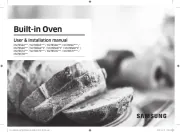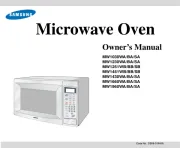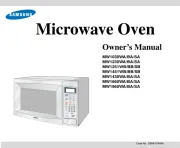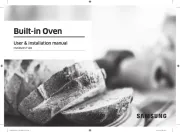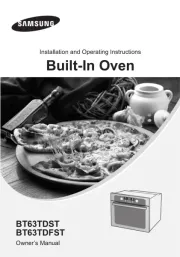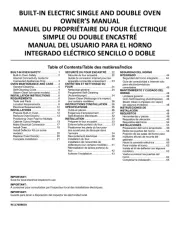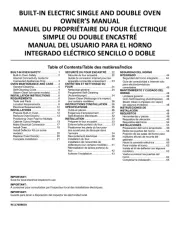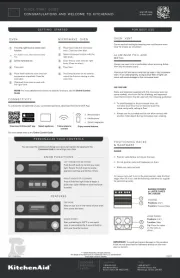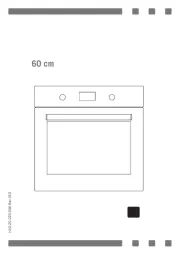
electric range tech sheet
cha técnica de cocina eléctrica
che technique de la cuisinière électrique
MODEL [MODELO] [MODÈLE] : NE63*631***
INFORMATION DISPLAY CODES
Possible check codes during use can be checked before service.
1. Press CLOCK 1, 2, 3, 4 and number “ ” pads.
3. Press CLOCK NUM 1 and pads at the same time for 3 seconds. Check codes are displayed.
4. Press number “ ” pad, the latest 5 check codes can be checked. But, if the oven turns off, the stored check codes and deleted.0
5. Press OFF/CLEAR pad to return to normal display mode.
DISPLAYED CODE SOLUTIONCAUSE
1. Disconnect power. Open the cover back. Check whether harness has been connected with
door lock switch and motor.
2. Conrm whether resistance value of door lock motor is to be normal one or not.
3. With operating door lockout, measure a voltage of connector on harness which is linked
with door lock motor. (normal voltage : AC 120 V)
4. Check whether door locking switch is being worked normally.
1. Check whether connector of pcb has been inserted.
2. Check whether connector of sensor has been inserted.
3. If there is not a problem occurred with connector on pcb, replace the sensor.
4. If can’t solve the problem, replace the pcb.
1. Disconnect power. Open the cover back. Disconnect sensor harness. Measure sensor
resistance : 1080 Ω at the room temperature. If there are any problems, replace oven →
2. Check the broil and bake heater. Check the resistance of the each heater.
3. Check whether DLB of pcb, broil and bake heater relay are being worked normally.
4. Check whether there is any disconnection of harness on pcb.
NOTE: This sheet contains important Technical Service Data.
FOR SER
FOR SER
FOR SER
FOR SERVICE TECHNICIAN ONL
VICE TECHNICIAN ONL
VICE TECHNICIAN ONL
VICE TECHNICIAN ONLY DO NO
Y DO NO
Y DO NO
Y DO NOT REMOVE OR DESTR
T REMOVE OR DESTR
T REMOVE OR DESTR
T REMOVE OR DESTROY
OY
OY
OYFOR SERVICE TECHNICIAN ONLY DO NOT REMOVE OR DESTROY
Location Function Location Function
CNP100 AC Power Input Oven Lamp, Door Lock motorCNP201
RY200 DLB(Dual Line Breaker) Relay Warming Center HeaterCNP202
RY201 Broil Heater Control Relay Door Switch, Door Lock Switch, Meat probeCNS300
RY203 Bake Heater Control Relay
CÓDIGOS DE INFORMACIÓN EN PANTALLA
Pueden controlarse los posibles códigos de vericación durante el uso antes de acudir al servicio técnico.
1. Presione las teclas CLOCK (RELOJ) 1, 2, 3, 4 y “ ”.
2. Presione la tecla START/SET (INICIO/CONFIGURAR).
3. Presione las teclas CLOCK (RELOJ) 1 y “ ” al mismo tiempo durante 3 segundos. Se muestran los códigos de vericación.
4. Presione la tecla numérica “ ”con la que podrán controlarse los últimos 5 códigos de vericación. Pero si el horno se apaga, los códigos 0
de vericación almacenados se borran.
5. Presione la tecla OFF/CLEAR (APAGAR/BORRAR) para regresar al modo de pantalla normal.
CÓDIGO MOSTRADO SOLUCIÓNCAUSA
Este código se muestra si
1. Desconecte el tomacorriente. Abra la cubierta posterior. Revise si el arnés está
conectado con el switch de bloqueo de la puerta y el motor.
Conrme si el valor de la resistencia del motor de bloqueo de la puerta es normal o no.
Con el bloqueo de la puerta en funcionamiento, mida el voltaje del conector del arnés
que está conectado con el motor del bloqueo de la puerta. (voltaje normal: AC 120 V)
4. Revise si el switch de bloqueo de la puerta funciona normalmente.
1. Revise si el conector del PCB está insertado.
2. Revise si el conector del sensor está insertado.
3. Si no hay problemas con el conector del PCB, reemplace el sensor.
4. Si no se soluciona el problema, reemplace el PCB.
Hay un cortocircuito en el
el horno está funcionando.
Este código se muestra si
la temperatura interna es
esconecte el tomacorriente. Abra la cubierta posterior. Desconecte el arnés del sensor.
Mida la resistencia del sensor: 1080 Ω a temperatura ambiente.
reemplace el sensor del horno.
2. Revise el calentador para asar a la parrilla y para hornear. Revise la resistencia de
3. Revise el correcto funcionamiento del relé del interruptor de doble línea (DLB) del
PCB y del calentador para asar a la parrilla y para hornear.
4. Revise si hay algún arnés desconectado en el PCB.
NOTA: Esta página contiene información importante del Servicio Técnico.
P
P
P
PARA EL TÉCNIC
ARA EL TÉCNIC
ARA EL TÉCNIC
ARA EL TÉCNICO DE SERVICIO ÚNICAMENTE NO RETIRAR NI DESTRUIR
O DE SERVICIO ÚNICAMENTE NO RETIRAR NI DESTRUIR
O DE SERVICIO ÚNICAMENTE NO RETIRAR NI DESTRUIR
O DE SERVICIO ÚNICAMENTE NO RETIRAR NI DESTRUIR
PARA EL TÉCNICO DE SERVICIO ÚNICAMENTE NO RETIRAR NI DESTRUIR
CODES D’AFFICHAGE D’INFORMATIONS
Les codes de vérication possibles peuvent être vériés avant la réparation.
1. Appuyez sur CLOCK (HORLOGE) 1, 2, 3, 4 et sur une touche numérique « ».
2. Appuyez sur la touche START/SET (DÉPART/RÉGLAGE).
3. Appuyez simultanément sur CLOCK (HORLOGE) numérique 1 et sur la touche pendant 3secondes. Les codes de vérication s’afchent.
4. Appuyez sur la touche numérique « ». Les 5 derniers codes de vérication peuvent alors être consultés. Lorsque le four s’éteint, les 0
codes de vérication enregistrés sont effacés.
5. Appuyez sur la touche OFF/CLEAR (ARRÊT/EFFACER) pour revenir au mode d’afchage normal.
CODE AFFICHÉ SOLUTIONCAUSE
1. Coupez l'alimentation. Ouvrez le couvercle arrière. Vériez si les ls couplés sont connectés au
commutateur de verrouillage de la porte et au moteur.
2. Vériez que la valeur de résistance du moteur de verrouillage de la porte est normale.
3. Lors du déverrouillage de la porte, mesurez la tension du connecteur des ls couplés reliés au
moteur de verrouillage de la porte. (tension normale: 120VCA)
4. Vériez que le commutateur de verrouillage de la porte fonctionne normalement.
1. Vériez que le connecteur de la carte de circuit imprimé a bien été inséré.
2. Vériez si le connecteur du capteur a bien été inséré.
3. Si le connecteur de la carte de circuit imprimé ne présente aucun problème, remplacez le capteur.
4. Si le problème persiste, remplacez la carte de circuit imprimé.
1. Coupez l'alimentation. Ouvrez le couvercle arrière. Débranchez les ls couplés du capteur. Mesurez la
résistance du capteur: 1080Ω à température ambiante. En cas de problème, remplacez le capteur →
2. Vériez les foyers du gril et de la cuisson. Vériez la résistance de chaque foyer.
3. Vériez si le disjoncteur bipolaire de la carte de circuit imprimé et les relais des foyers du gril et de
cuisson fonctionnent normalement.
4. Vériez que les ls couplés reliés à la carte de circuit imprimé ne sont pas débranchés.
REMARQUE: Cette che contient d’importantes données de maintenance technique.
RÉSERVÉE A
RÉSERVÉE A
RÉSERVÉE A
RÉSERVÉE AUX TECHNICIENS DE MAINTENANCE NE P
UX TECHNICIENS DE MAINTENANCE NE P
UX TECHNICIENS DE MAINTENANCE NE P
UX TECHNICIENS DE MAINTENANCE NE PAS SUPPRIMER NI DÉTRUIRE
AS SUPPRIMER NI DÉTRUIRE
AS SUPPRIMER NI DÉTRUIRE
AS SUPPRIMER NI DÉTRUIRE
RÉSERVÉE AUX TECHNICIENS DE MAINTENANCE NE PAS SUPPRIMER NI DÉTRUIRE
1. Circuit shown with all controls set to off
2. Oven door opened and unlocked
RED RED YEL YELLOW GRN GREEN
BLK BLACK BLUE GRAYBLU GRY
Circuito mostrado con todos los controles
2. Puerta del horno abierta y no bloqueada
RED YEL AMARILLO GRN VERDEROJO
BLK NEGRO AZUL GRISBLU GRY
Circuit afché avec toutes les commandes
2. Porte du four ouverte et déverrouillée
RED ROUGE YEL GRN VERTJAUNE
BLK NOIR BLEU GRISBLU GRY
WIRE DIAGRAM [DIAGRAMA DEL CABLEADO] [SCHÉMA DE CÂBLAGE]
COOKTOP ELEMENT [ELEMENTO DE LA CUBIERTA] [ÉLÉMENT DE LA TABLE DE CUISSON]
COMPONENTS [COMPONENTES] [COMPOSANTS]
WATTAGE [VATIAJE] [PUISSANCE
[CALENTADOR RADIANTE DELANTERO DERECHO]
[CALENTADOR RADIANTE DELANTERO IZQUIERDO]
[CALENTADOR RADIANTE TRASERO DERECHO]
[CALENTADOR RADIANTE TRASERO IZQUIERDO]
WARMING CENTER [CENTRO DE CALENTAMIENTO]
OVEN HEATING ELEMENT [ELEMENTO CALENTADOR DEL HORNO]
[ÉLÉMENT CHAUFFANT DU FOUR]
[CALENTADOR PARA ASAR A LA
[RÉSISTANCE DE CUISSON AU GRIL]
[CALENTADOR PARA HORNEAR]
Ubicación Función Ubicación Función
CNP100 CNP201Entrada de CA
Lámpara del horno, Motor de bloqueo de
RY200 Relé del DLB (interruptor de doble línea) Calentador del centro de calentamientoCNP202
Relé de control del calentador para asar a la
Interruptor de puerta, Interruptor de bloqueo
de puerta, Sonda para carne
RY203 Relé de control de calentador para hornear
Emplacement Fonction Emplacement Fonction
CNP100 CNP201Entrée d’alimentation en CA
Lampe du four, Moteur de verrouillage de
RY200 Relais DLB (disjoncteur bipolaire) Foyer du centre de chauffageCNP202
RY201 Relais de commande du foyer du gril CNS300
Interrupteur de porte, Interrupteur de
verrouillage de porte, Sonde à viande
RY203 Relais de commande du foyer de cuisson
MINI_T FS_NE63A6311S_AA_DG68-01355A-00_EN+MES+CFR.indd 1
MINI_T FS_NE63A6311S_AA_DG68-01355A-00_EN+MES+CFR.indd 1
MINI_T FS_NE63A6311S_AA_DG68-01355A-00_EN+MES+CFR.indd 1
MINI_T FS_NE63A6311S_AA_DG68-01355A-00_EN+MES+CFR.indd 1MINI_T FS_NE63A6311S_AA_DG68-01355A-00_EN+MES+CFR.indd 1
2024-08-16 오후 5:20:52
2024-08-16 오후 5:20:52
2024-08-16 오후 5:20:52
2024-08-16 오후 5:20:522024-08-16 오후 5:20:52
